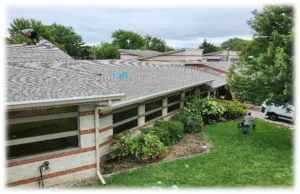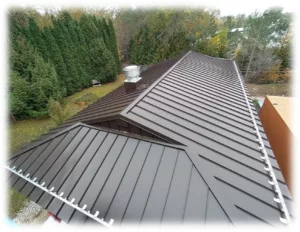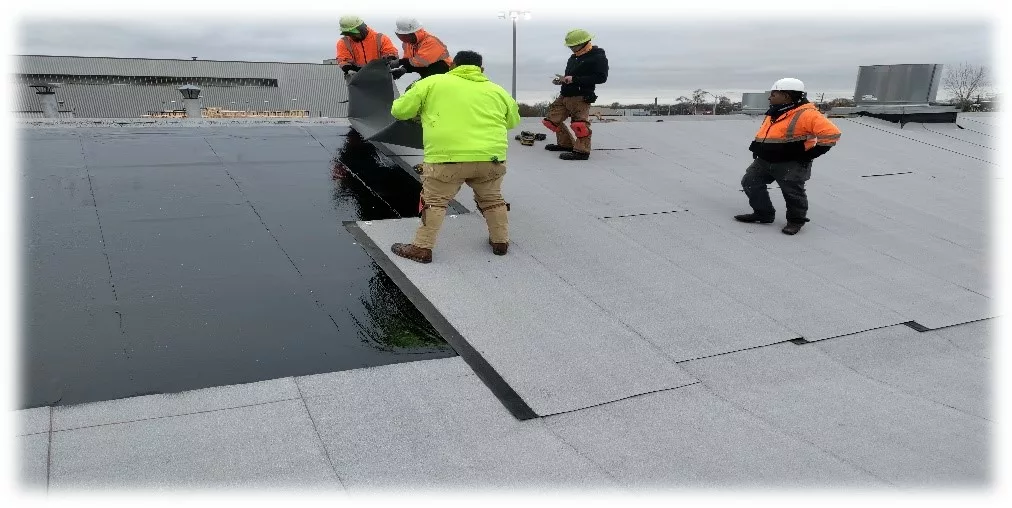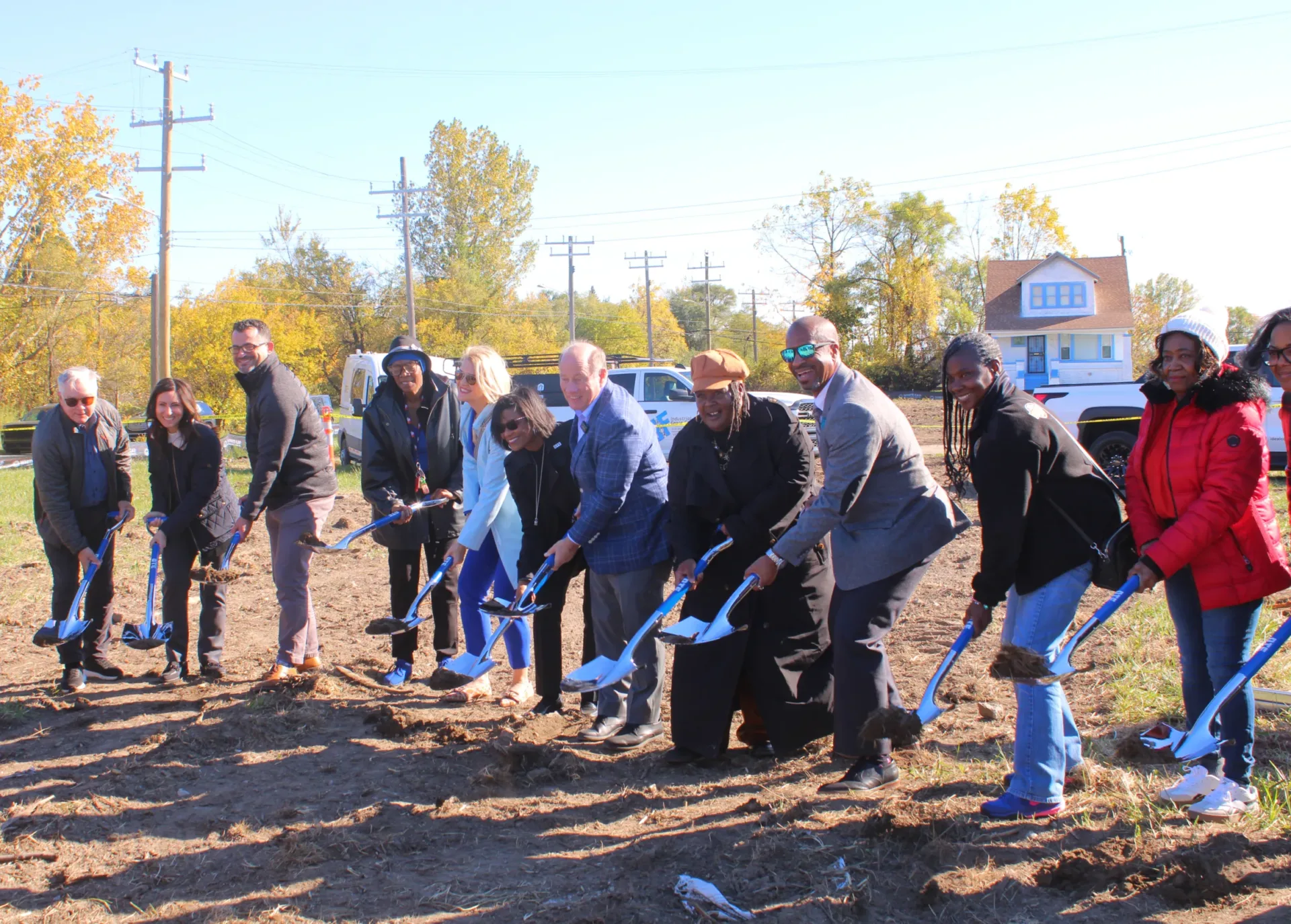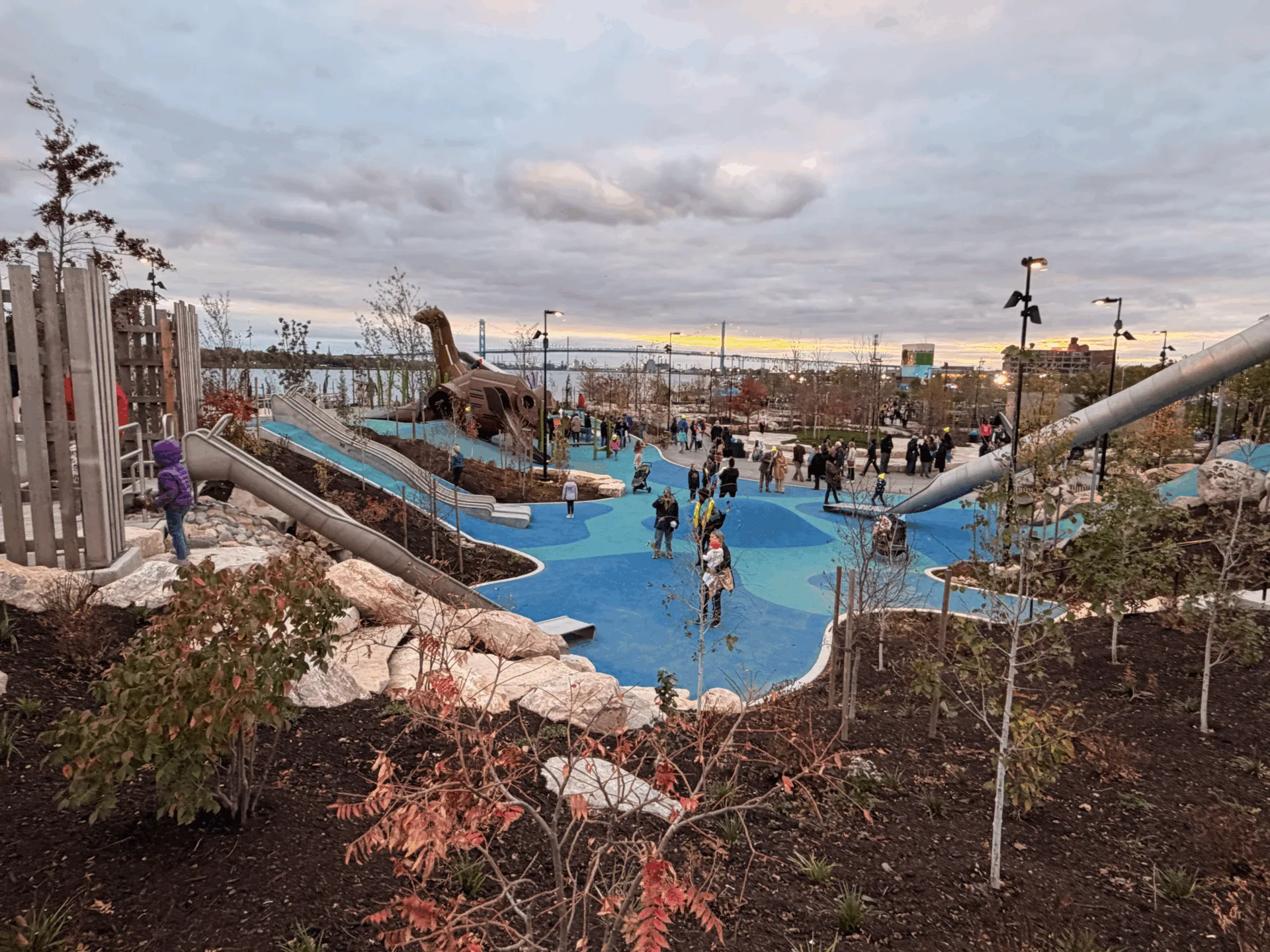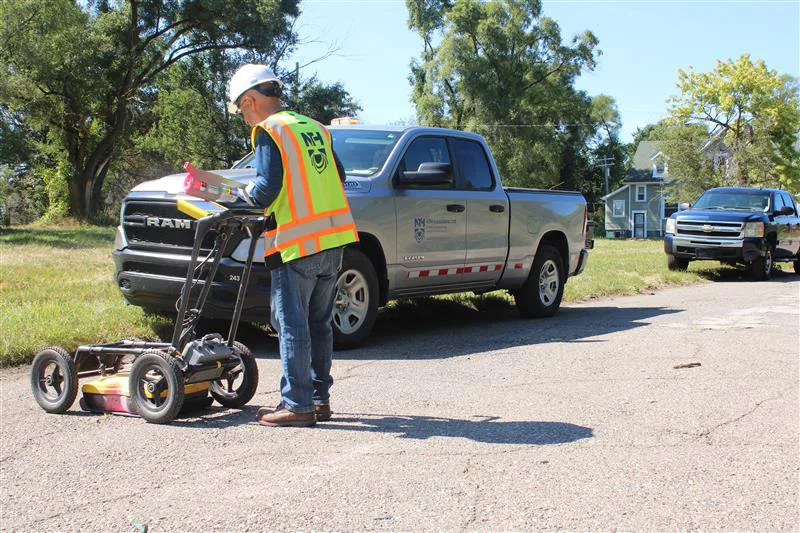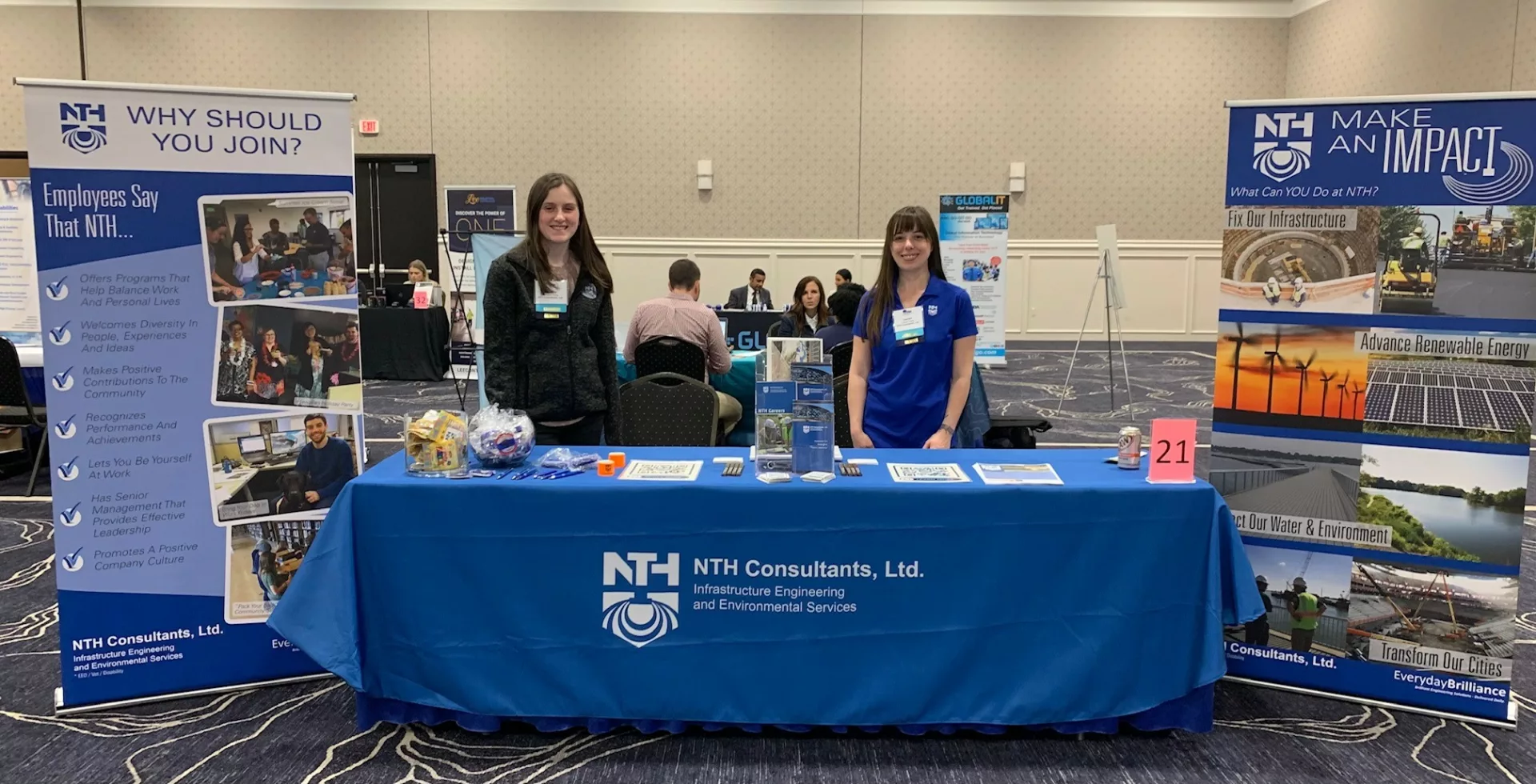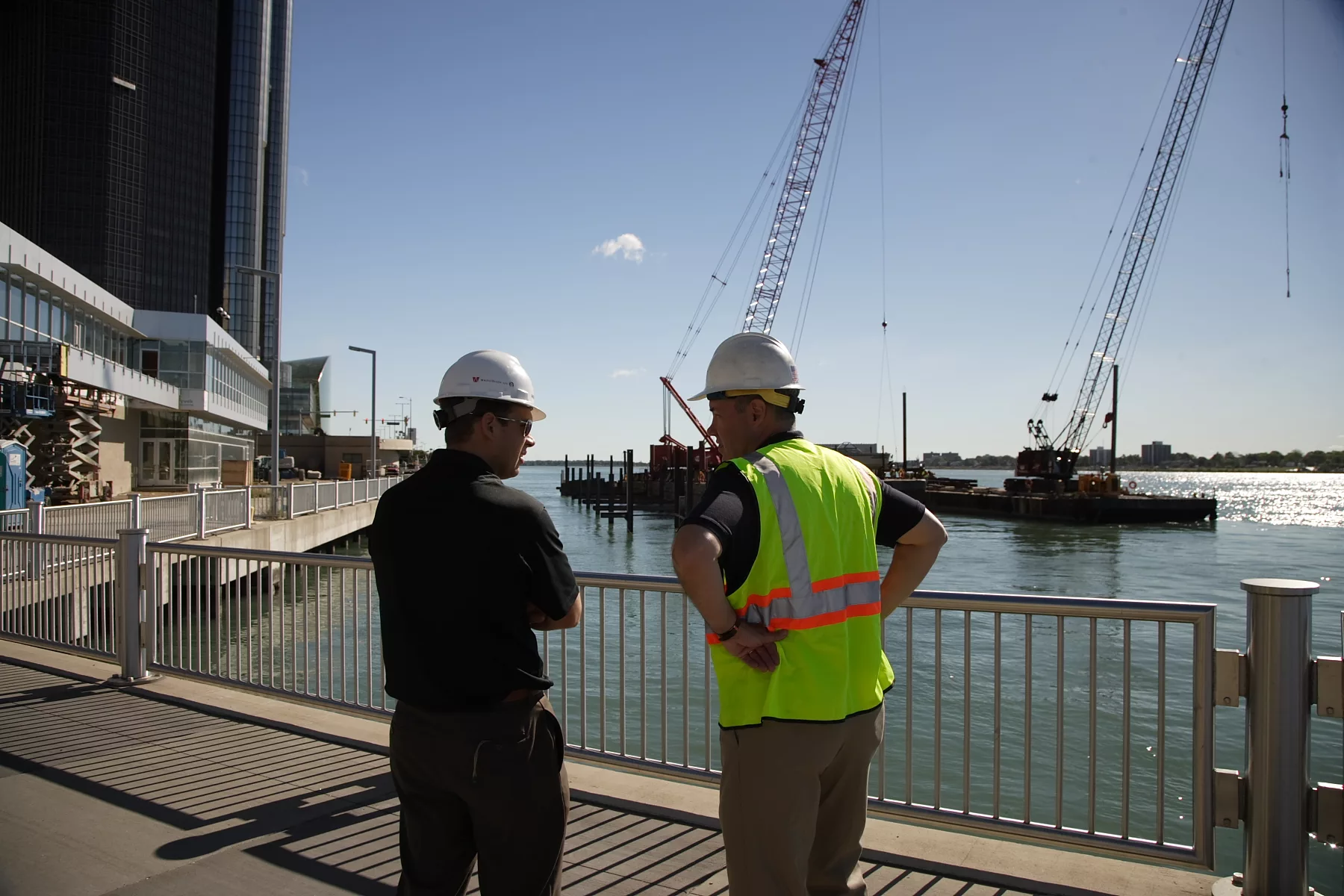The roofing division at NTH is responsible for the removal and installation of new roofs. Commercial and Industrial roofs are the predominant source of these new roofs. Though last year was a slow year for the roofing team, a number of different roofs were successfully completed. And more interestingly, several different roof types were installed. Aside from launching new roof initiatives, the group designs, specifies and observes the removal and installation of new roofs.
One of the roofing team members was responsible for overseeing the installation of several different roofing types. Modified Bitumen (Mod-Bit) and Ethylene Propylene Diene Monomer (EPDM) roof types are our bread and butter; however, he was given the opportunity to oversee the installation of two other roof types, not typically in our wheelhouse, Asphalt Shingles, and Architectural Standing Seam Metal Roof Panels. These last two roof types are most commonly seen on residential home roofs.
The photo above is the installation of a Mod-Bit roof completed by Bloom Roofing. It was installed using a cold applied adhesive. It’s a two-ply system meaning two layers of membrane were installed with the adhesive providing two separate layers of watertight protection.
The first photo to the right shows an EPDM roof installed by CEI Michigan. It is a one-ply roof system made of rubber. This new roof was installed last summer on the newly constructed addition to Walled Lake Western High School. Additional existing roof areas will also receive single-ply EPDM rubber later this year.
The second photo to the right showcases an asphalt shingle roof installed by Citi Roofing and overseen by Tito this past summer, as well. The new shingle roof was installed at Our Lady of Sorrows Elementary School. The shingle itself was an upgraded premium shingle
The final photo is one of our personal favorites. It’s the beautiful Architectural Standing Seam Metal Panel roof system. It was also installed by Bloom Roofing on a small garage in Petoskey in the late fall. All fasteners for this style of roofing are hidden beneath each individual metal panel. Interestingly, this is not a waterproof roof system and relies on the slope of the roof coupled with the metal surface to shed water effectively. The metallic colored rail seen around the perimeter of the two roof sections are snow and ice dam rails. They’re intended to prevent heavy snow loads from crashing down below those work areas and are fastened to the panels with noninvasive clamps.

